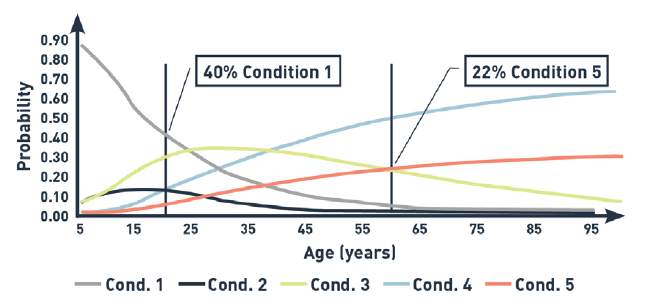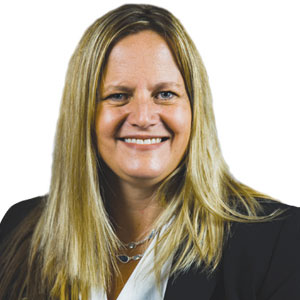THANK YOU FOR SUBSCRIBING
Editor's Pick (1 - 4 of 8)

Facility Management is a Sector Ripe for Digital Disruption
Donald Macdonald, Director, Macdonald Lucas


Donald Macdonald, Director, Macdonald Lucas
• The elimination of labor- intensive activities that add no value to the FM process;
• Efficient interfacing of FM related IT systems;
• Better analysis of how asset populations perform and deteriorate in situ; and,
• The ability to optimize whole of life asset costs by better understanding the interrelationship between planned maintenance, reactive maintenance, and life cycle replacement.
Macdonald Lucas has been privileged to work on two current FM initiatives that are truly digitally disruptive.
IoT Initiative
A major FM contract for FIFO villages (fly in fly out accommodation for itinerant workers in the utilities industry) in remote Australia saw the deployment of over 17,000 IoT sensors to bedrooms and common areas. These devices ensured the heating, ventilation and air conditioning systems ran optimally. Consequently, utilities consumption and wear and tear was minimized, risk of asset failure reduced and asset life extended.
Monitoring asset performance for issues like overheating and excessive vibration enabled a shift from planned maintenance to a condition-based maintenance model with maintenance carried out when required rather than in response to a strict calendar of activities.
The same contract, saw air conditioning, triggered by environmental measures like ambient temperature and relative humidity, being automatically switched on or off as appropriate when rooms were empty. This negated risks like mould growth, condensation and similar.
As it was included in the tender price the initiative was affordable, and being a new contract there was no cost of change. Also, competitive tension favoured it. This was because the remote, distributed, disaggregated portfolio being serviced made it a more cost-effective model than the more traditional labor- intensive ones proposed by the competition.
This initiative may be considered disruptive as it eliminated expensive labour- intensive asset maintenance activities that are currently the bedrock of most FM contracts and it leveraged technology to optimise asset performance.
Life Cycle Modelling
A significant FM challenge is accurate budgeting for life cycle works (asset replacement at the end of design life) e.g. failed boilers, pumps, and air conditioning units.
Life cycle modeling typically uses deterministic, linear modelling which is an inaccurate method of predicting asset failure.
An Australian university has developed a web enabled life cycle estimating tool that uses probabilistic statistical analytical techniques including Markov Chain, Monte Carlo, and genetic algorithms to calculate degradation curves that model far more accurately asset life. These curves are applied at individual asset level and become more accurate over time as data regarding changing asset condition is periodically uploaded.
 A sample degradation curve
Reasons why this work is digitally disruptive include:
• By working with the tertiary education sector, whose core business is innovation, the limitations imposed by constrained R&D budgets has been broken;
• A methodology to accurately model asset deterioration has been developed; and,
• The ability to accurately model the whole of life costs is now one step closer.
Conclusion
These two projects send a clear message to the wider FM industry. Service providers that lock themselves into old fashioned models and to methods that are constrained by the limitations of current contracts, do so at their peril. They risk going the same way as other victims of digital disrupters, as more innovative thinkers enter the industry.
See More: Top Facility Management Companies
A sample degradation curve
Reasons why this work is digitally disruptive include:
• By working with the tertiary education sector, whose core business is innovation, the limitations imposed by constrained R&D budgets has been broken;
• A methodology to accurately model asset deterioration has been developed; and,
• The ability to accurately model the whole of life costs is now one step closer.
Conclusion
These two projects send a clear message to the wider FM industry. Service providers that lock themselves into old fashioned models and to methods that are constrained by the limitations of current contracts, do so at their peril. They risk going the same way as other victims of digital disrupters, as more innovative thinkers enter the industry.
See More: Top Facility Management Companies
 A sample degradation curve
Reasons why this work is digitally disruptive include:
• By working with the tertiary education sector, whose core business is innovation, the limitations imposed by constrained R&D budgets has been broken;
• A methodology to accurately model asset deterioration has been developed; and,
• The ability to accurately model the whole of life costs is now one step closer.
Conclusion
These two projects send a clear message to the wider FM industry. Service providers that lock themselves into old fashioned models and to methods that are constrained by the limitations of current contracts, do so at their peril. They risk going the same way as other victims of digital disrupters, as more innovative thinkers enter the industry.
See More: Top Facility Management Companies
A sample degradation curve
Reasons why this work is digitally disruptive include:
• By working with the tertiary education sector, whose core business is innovation, the limitations imposed by constrained R&D budgets has been broken;
• A methodology to accurately model asset deterioration has been developed; and,
• The ability to accurately model the whole of life costs is now one step closer.
Conclusion
These two projects send a clear message to the wider FM industry. Service providers that lock themselves into old fashioned models and to methods that are constrained by the limitations of current contracts, do so at their peril. They risk going the same way as other victims of digital disrupters, as more innovative thinkers enter the industry.
See More: Top Facility Management Companies











